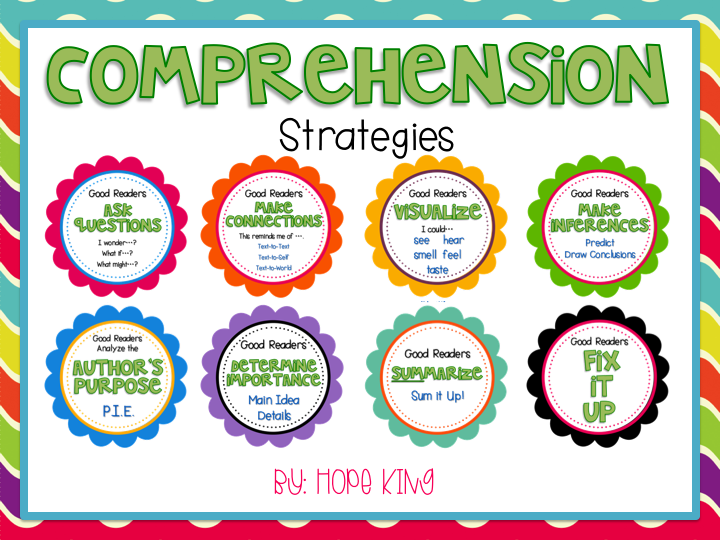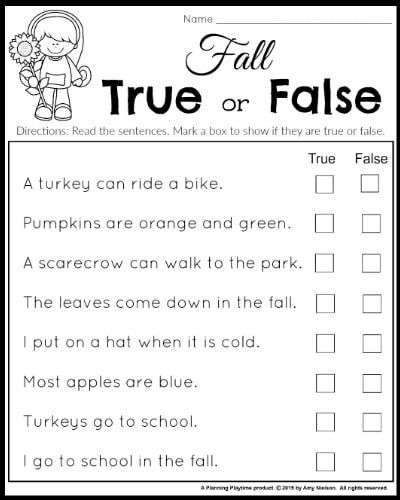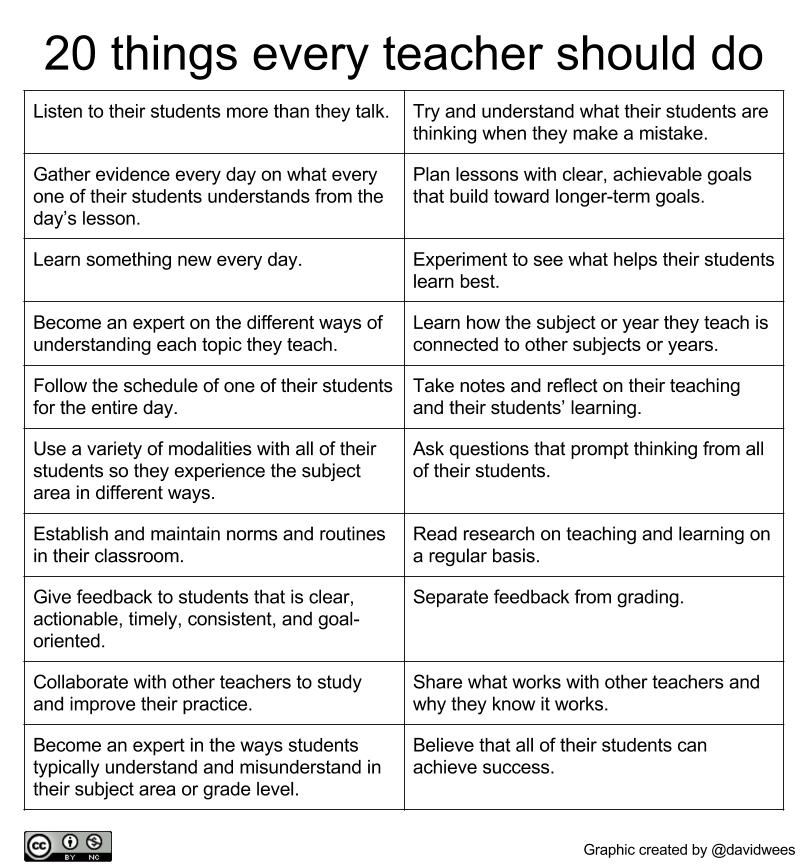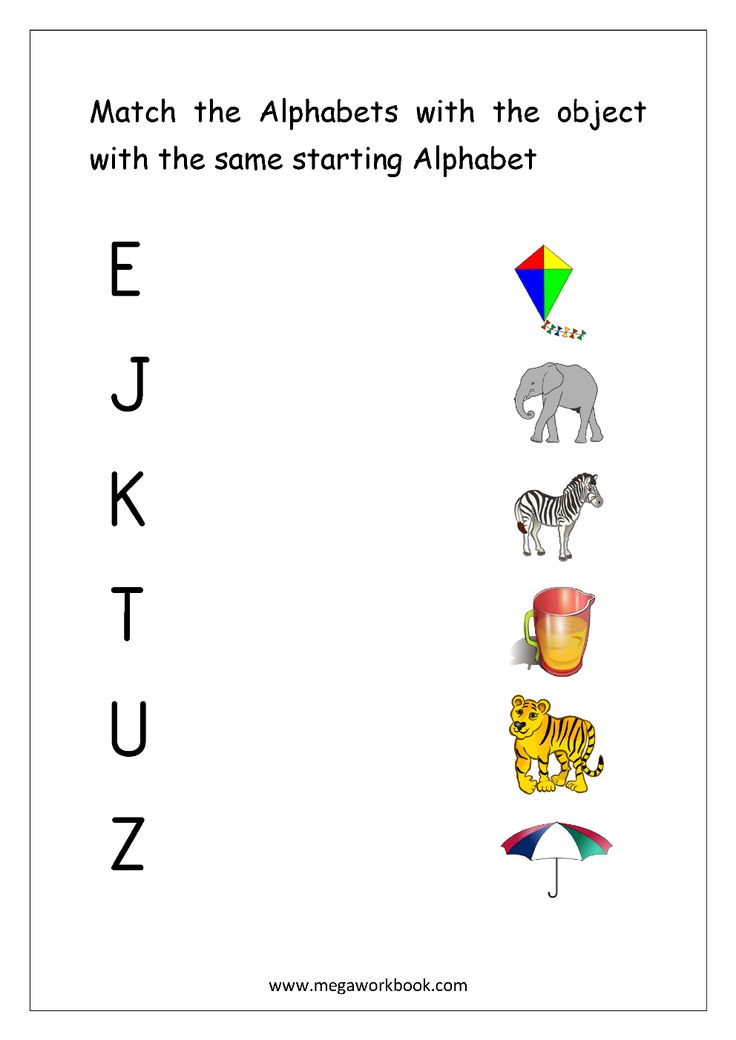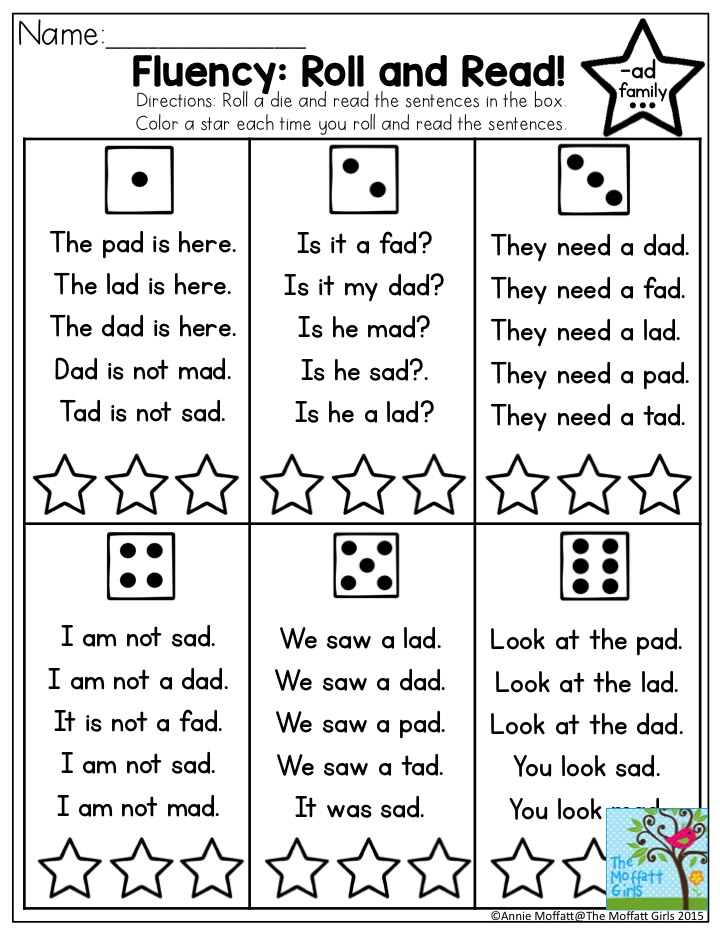Elementary comprehension strategies
Seven Strategies to Teach Students Text Comprehension
1. Monitoring comprehension
Students who are good at monitoring their comprehension know when they understand what they read and when they do not. They have strategies to "fix" problems in their understanding as the problems arise. Research shows that instruction, even in the early grades, can help students become better at monitoring their comprehension.
Comprehension monitoring instruction teaches students to:
- Be aware of what they do understand
- Identify what they do not understand
- Use appropriate strategies to resolve problems in comprehension
2. Metacognition
Metacognition can be defined as "thinking about thinking." Good readers use metacognitive strategies to think about and have control over their reading. Before reading, they might clarify their purpose for reading and preview the text. During reading, they might monitor their understanding, adjusting their reading speed to fit the difficulty of the text and "fixing" any comprehension problems they have.
After reading, they check their understanding of what they read.
Students may use several comprehension monitoring strategies:
- Identify where the difficulty occurs
"I don't understand the second paragraph on page 76."
- Identify what the difficulty is
"I don't get what the author means when she says, 'Arriving in America was a milestone in my grandmother's life.'"
- Restate the difficult sentence or passage in their own words
"Oh, so the author means that coming to America was a very important event in her grandmother's life."
- Look back through the text
"The author talked about Mr. McBride in Chapter 2, but I don't remember much about him. Maybe if I reread that chapter, I can figure out why he's acting this way now."
- Look forward in the text for information that might help them to resolve the difficulty
"The text says, 'The groundwater may form a stream or pond or create a wetland. People can also bring groundwater to the surface.
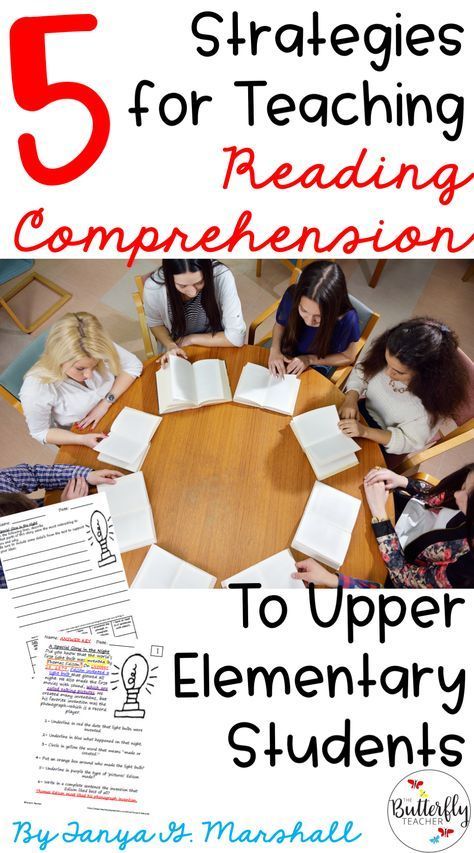 ' Hmm, I don't understand how people can do that… Oh, the next section is called 'Wells.' I'll read this section to see if it tells how they do it."
' Hmm, I don't understand how people can do that… Oh, the next section is called 'Wells.' I'll read this section to see if it tells how they do it."
3. Graphic and semantic organizers
Graphic organizers illustrate concepts and relationships between concepts in a text or using diagrams. Graphic organizers are known by different names, such as maps, webs, graphs, charts, frames, or clusters.
Regardless of the label, graphic organizers can help readers focus on concepts and how they are related to other concepts. Graphic organizers help students read and understand textbooks and picture books.
Graphic organizers can:
- Help students focus on text structure differences between fiction and nonfiction as they read
- Provide students with tools they can use to examine and show relationships in a text
- Help students write well-organized summaries of a text
Here are some examples of graphic organizers:
4. Answering questions
Questions can be effective because they:
- Give students a purpose for reading
- Focus students' attention on what they are to learn
- Help students to think actively as they read
- Encourage students to monitor their comprehension
- Help students to review content and relate what they have learned to what they already know
The Question-Answer Relationship strategy (QAR) encourages students to learn how to answer questions better.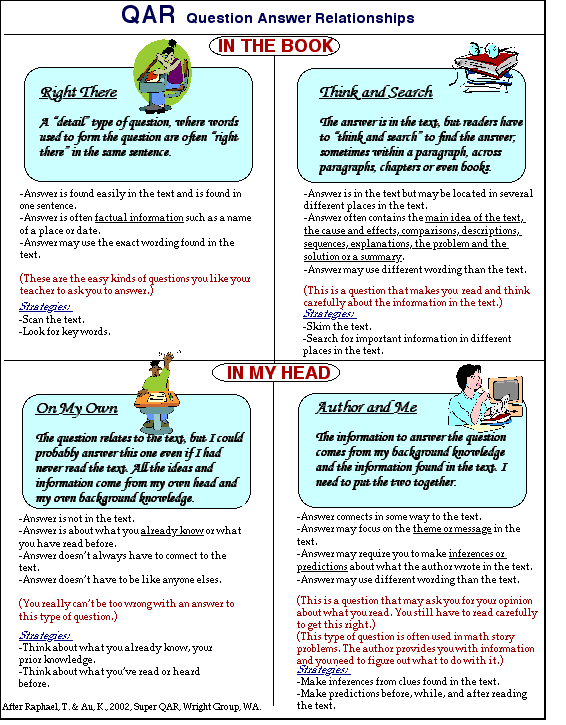 Students are asked to indicate whether the information they used to answer questions about the text was textually explicit information (information that was directly stated in the text), textually implicit information (information that was implied in the text), or information entirely from the student's own background knowledge.
Students are asked to indicate whether the information they used to answer questions about the text was textually explicit information (information that was directly stated in the text), textually implicit information (information that was implied in the text), or information entirely from the student's own background knowledge.
There are four different types of questions:
- "Right There"
Questions found right in the text that ask students to find the one right answer located in one place as a word or a sentence in the passage.
Example: Who is Frog's friend? Answer: Toad
- "Think and Search"
Questions based on the recall of facts that can be found directly in the text. Answers are typically found in more than one place, thus requiring students to "think" and "search" through the passage to find the answer.
Example: Why was Frog sad? Answer: His friend was leaving.
- "Author and You"
Questions require students to use what they already know, with what they have learned from reading the text.
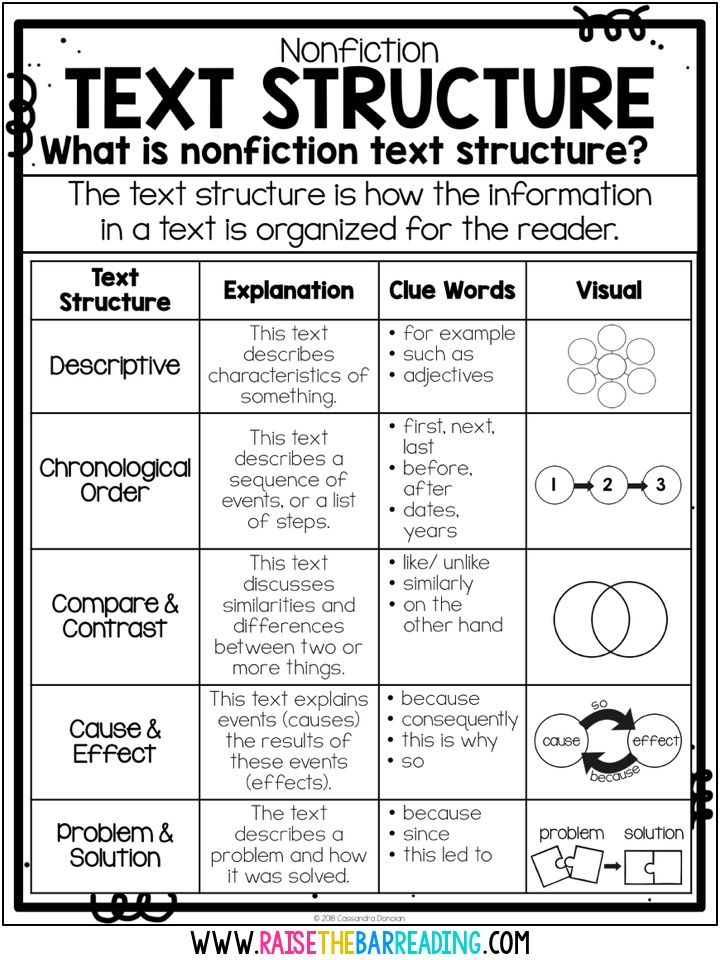 Students must understand the text and relate it to their prior knowledge before answering the question.
Students must understand the text and relate it to their prior knowledge before answering the question.Example: How do think Frog felt when he found Toad? Answer: I think that Frog felt happy because he had not seen Toad in a long time. I feel happy when I get to see my friend who lives far away.
- "On Your Own"
Questions are answered based on a student's prior knowledge and experiences. Reading the text may not be helpful to them when answering this type of question.
Example: How would you feel if your best friend moved away? Answer: I would feel very sad if my best friend moved away because I would miss her.
5. Generating questions
By generating questions, students become aware of whether they can answer the questions and if they understand what they are reading. Students learn to ask themselves questions that require them to combine information from different segments of text. For example, students can be taught to ask main idea questions that relate to important information in a text.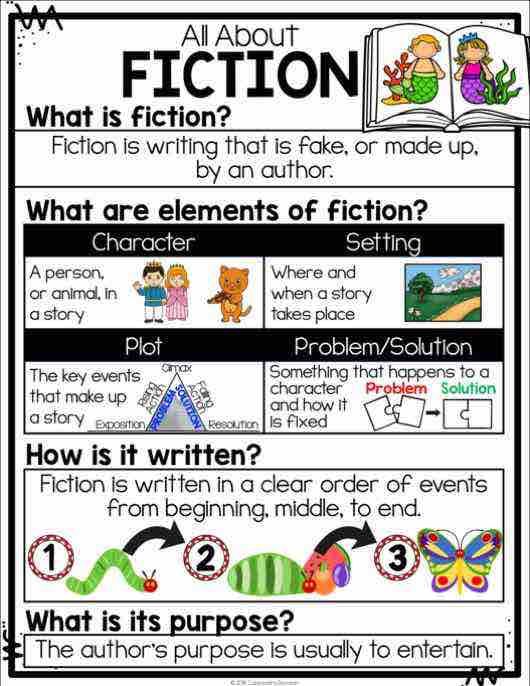
6. Recognizing story structure
In story structure instruction, students learn to identify the categories of content (characters, setting, events, problem, resolution). Often, students learn to recognize story structure through the use of story maps. Instruction in story structure improves students' comprehension.
7. Summarizing
Summarizing requires students to determine what is important in what they are reading and to put it into their own words. Instruction in summarizing helps students:
- Identify or generate main ideas
- Connect the main or central ideas
- Eliminate unnecessary information
- Remember what they read
Effective comprehension strategy instruction is explicit
Research shows that explicit teaching techniques are particularly effective for comprehension strategy instruction. In explicit instruction, teachers tell readers why and when they should use strategies, what strategies to use, and how to apply them.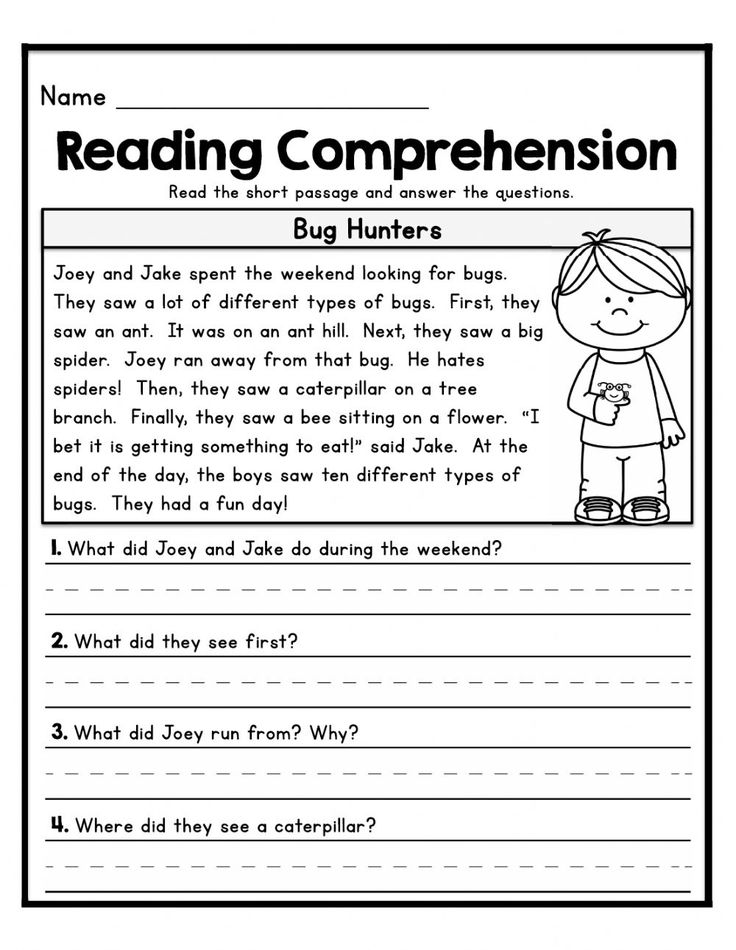 The steps of explicit instruction typically include direct explanation, teacher modeling ("thinking aloud"), guided practice, and application.
The steps of explicit instruction typically include direct explanation, teacher modeling ("thinking aloud"), guided practice, and application.
- Direct explanation
The teacher explains to students why the strategy helps comprehension and when to apply the strategy.
- Modeling
The teacher models, or demonstrates, how to apply the strategy, usually by "thinking aloud" while reading the text that the students are using.
- Guided practice
The teacher guides and assists students as they learn how and when to apply the strategy.
- Application
The teacher helps students practice the strategy until they can apply it independently.
Effective comprehension strategy instruction can be accomplished through cooperative learning, which involves students working together as partners or in small groups on clearly defined tasks. Cooperative learning instruction has been used successfully to teach comprehension strategies.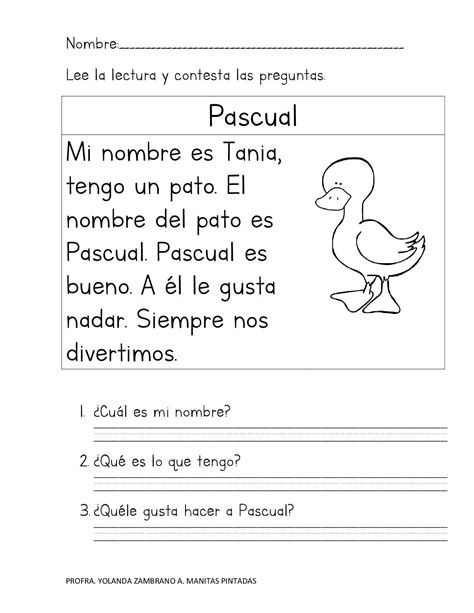 Students work together to understand texts, helping each other learn and apply comprehension strategies. Teachers help students learn to work in groups. Teachers also provide modeling of the comprehension strategies.
Students work together to understand texts, helping each other learn and apply comprehension strategies. Teachers help students learn to work in groups. Teachers also provide modeling of the comprehension strategies.
Strategies for Reading Comprehension :: Read Naturally, Inc.
Comprehension: The Goal of Reading
Comprehension, or extracting meaning from what you read, is the ultimate goal of reading. Experienced readers take this for granted and may not appreciate the reading comprehension skills required. The process of comprehension is both interactive and strategic. Rather than passively reading text, readers must analyze it, internalize it and make it their own.
In order to read with comprehension, developing readers must be able to read with some proficiency and then receive explicit instruction in reading comprehension strategies (Tierney, 1982).
Strategies for reading comprehension in Read Naturally programs
General Strategies for Reading Comprehension
The process of comprehending text begins before children can read, when someone reads a picture book to them.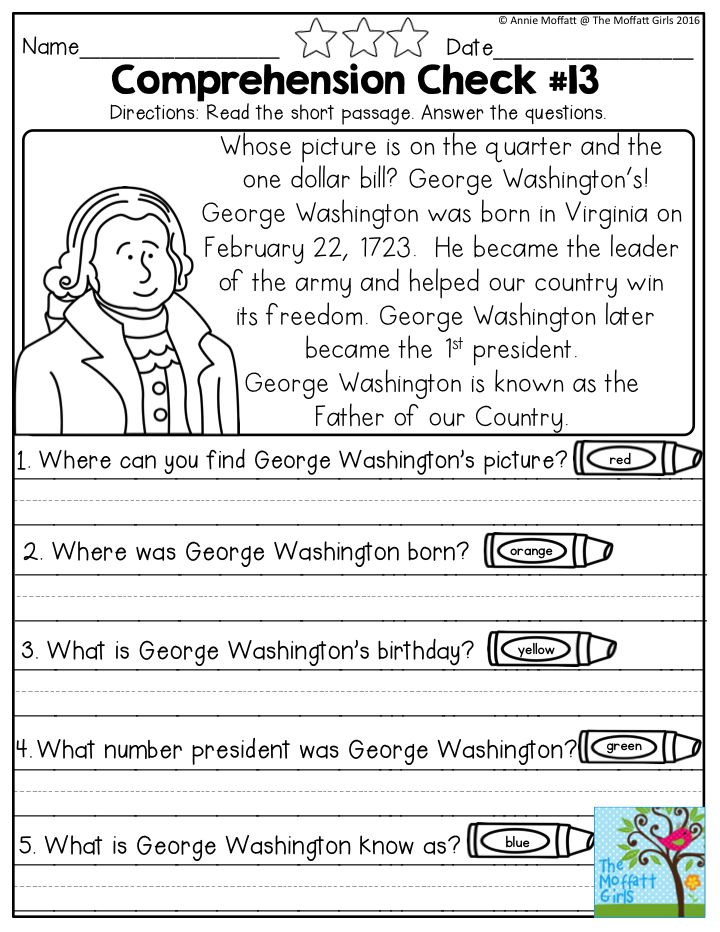 They listen to the words, see the pictures in the book, and may start to associate the words on the page with the words they are hearing and the ideas they represent.
They listen to the words, see the pictures in the book, and may start to associate the words on the page with the words they are hearing and the ideas they represent.
In order to learn comprehension strategies, students need modeling, practice, and feedback. The key comprehension strategies are described below.
Using Prior Knowledge/Previewing
When students preview text, they tap into what they already know that will help them to understand the text they are about to read. This provides a framework for any new information they read.
Predicting
When students make predictions about the text they are about to read, it sets up expectations based on their prior knowledge about similar topics. As they read, they may mentally revise their prediction as they gain more information.
Identifying the Main Idea and Summarization
Identifying the main idea and summarizing requires that students determine what is important and then put it in their own words.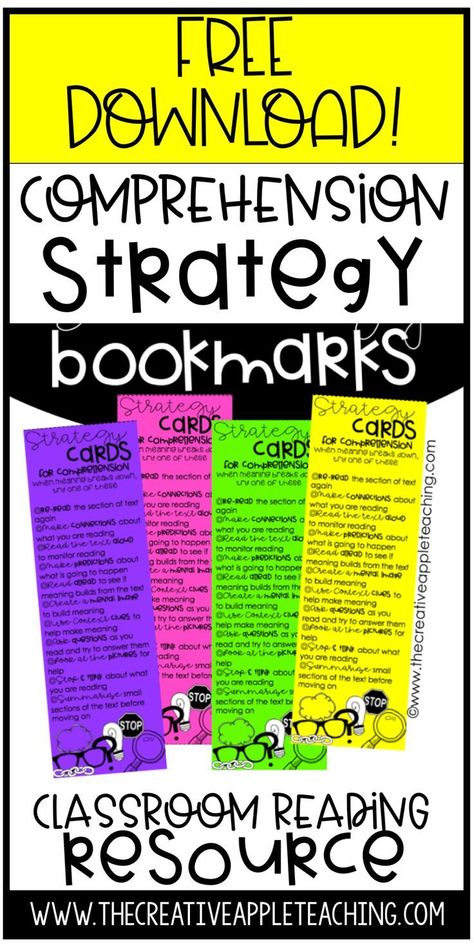 Implicit in this process is trying to understand the author’s purpose in writing the text.
Implicit in this process is trying to understand the author’s purpose in writing the text.
Questioning
Asking and answering questions about text is another strategy that helps students focus on the meaning of text. Teachers can help by modeling both the process of asking good questions and strategies for finding the answers in the text.
Making Inferences
In order to make inferences about something that is not explicitly stated in the text, students must learn to draw on prior knowledge and recognize clues in the text itself.
Visualizing
Studies have shown that students who visualize while reading have better recall than those who do not (Pressley, 1977). Readers can take advantage of illustrations that are embedded in the text or create their own mental images or drawings when reading text without illustrations.
Strategies for Reading Comprehension: Narrative Text
Narrative text tells a story, either a true story or a fictional story.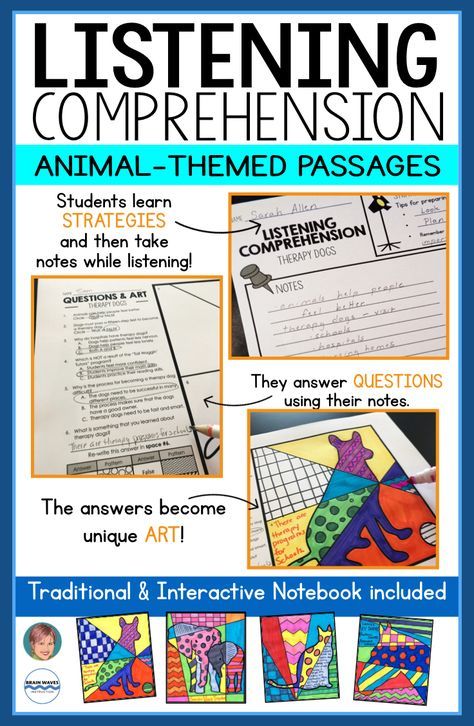 There are a number of strategies that will help students understand narrative text.
There are a number of strategies that will help students understand narrative text.
Story Maps
Teachers can have students diagram the story grammar of the text to raise their awareness of the elements the author uses to construct the story. Story grammar includes:
- Setting: When and where the story takes place (which can change over the course of the story).
- Characters: The people or animals in the story, including the protagonist (main character), whose motivations and actions drive the story.
- Plot: The story line, which typically includes one or more problems or conflicts that the protagonist must address and ultimately resolve.
- Theme: The overriding lesson or main idea that the author wants readers to glean from the story. It could be explicitly stated as in Aesop’s Fables or inferred by the reader (more common).
Printable story map (blank)
Retelling
Asking students to retell a story in their own words forces them to analyze the content to determine what is important.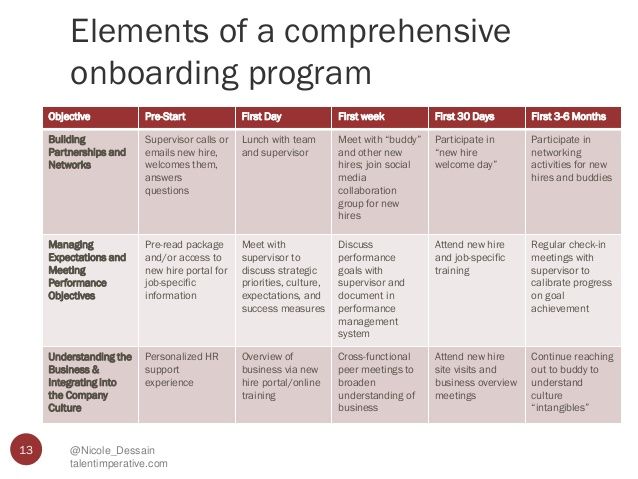 Teachers can encourage students to go beyond literally recounting the story to drawing their own conclusions about it.
Teachers can encourage students to go beyond literally recounting the story to drawing their own conclusions about it.
Prediction
Teachers can ask readers to make a prediction about a story based on the title and any other clues that are available, such as illustrations. Teachers can later ask students to find text that supports or contradicts their predictions.
Answering Comprehension Questions
Asking students different types of questions requires that they find the answers in different ways, for example, by finding literal answers in the text itself or by drawing on prior knowledge and then inferring answers based on clues in the text.
Strategies for Reading Comprehension: Expository Text
Expository text explains facts and concepts in order to inform, persuade, or explain.
The Structure of Expository Text
Expository text is typically structured with visual cues such as headings and subheadings that provide clear cues as to the structure of the information.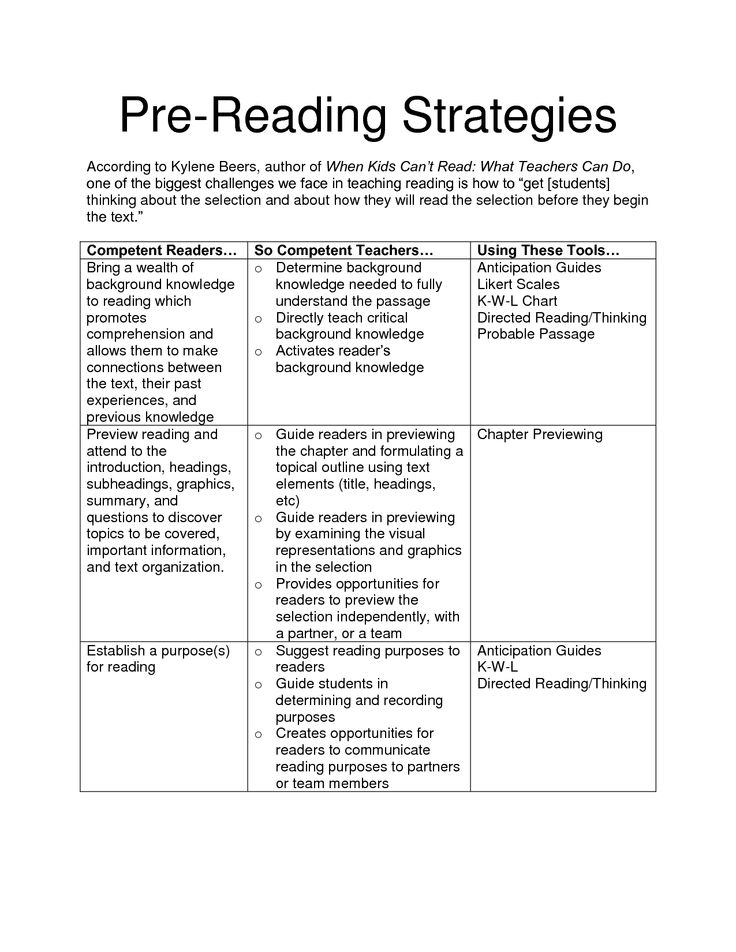 The first sentence in a paragraph is also typically a topic sentence that clearly states what the paragraph is about.
The first sentence in a paragraph is also typically a topic sentence that clearly states what the paragraph is about.
Expository text also often uses one of five common text structures as an organizing principle:
- Cause and effect
- Problem and solution
- Compare and contrast
- Description
- Time order (sequence of events, actions, or steps)
Teaching these structures can help students recognize relationships between ideas and the overall intent of the text.
Main Idea/Summarization
A summary briefly captures the main idea of the text and the key details that support the main idea. Students must understand the text in order to write a good summary that is more than a repetition of the text itself.
K-W-L
There are three steps in the K-W-L process (Ogle, 1986):
- What I Know: Before students read the text, ask them as a group to identify what they already know about the topic. Students write this list in the “K” column of their K-W-L forms.
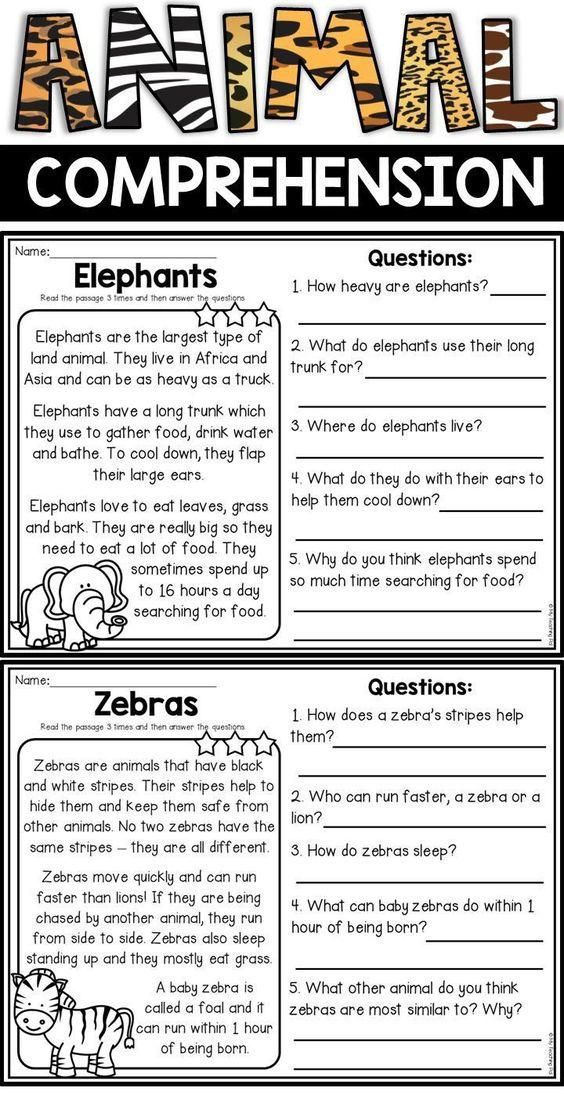
- What I Want to Know: Ask students to write questions about what they want to learn from reading the text in the “W” column of their K-W-L forms. For example, students may wonder if some of the “facts” offered in the “K” column are true.
- What I Learned: As they read the text, students should look for answers to the questions listed in the “W” column and write their answers in the “L” column along with anything else they learn.
After all of the students have read the text, the teacher leads a discussion of the questions and answers.
Printable K-W-L chart (blank)
Graphic Organizers
Graphic organizers provide visual representations of the concepts in expository text. Representing ideas and relationships graphically can help students understand and remember them. Examples of graphic organizers are:
Tree diagrams that represent categories and hierarchies
Tables that compare and contrast data
Time-driven diagrams that represent the order of events
Flowcharts that represent the steps of a process
Teaching students how to develop and construct graphic organizers will require some modeling, guidance, and feedback.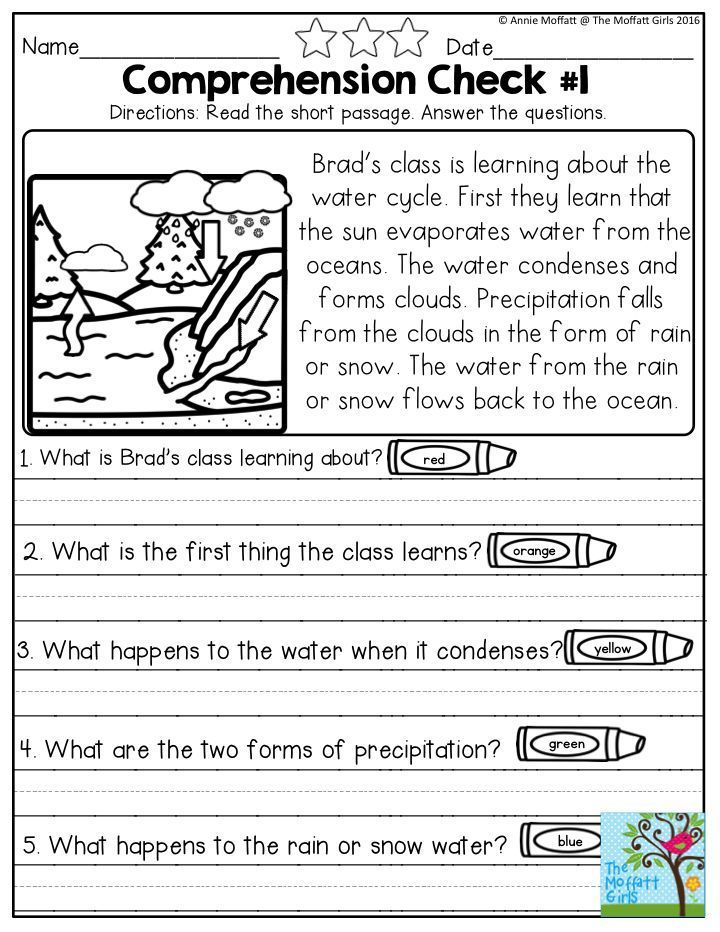 Teachers should demonstrate the process with examples first before students practice doing it on their own with teacher guidance and eventually work independently.
Teachers should demonstrate the process with examples first before students practice doing it on their own with teacher guidance and eventually work independently.
Strategies for Reading Comprehension in Read Naturally Programs
Several Read Naturally programs include strategies that support comprehension:
| Read Naturally Intervention Program | Strategies for Reading Comprehension | |||
|---|---|---|---|---|
| Prediction Step | Retelling Step | Quiz / Comprehension Questions | Graphic Organizers | |
| Read Naturally Live:
| ✔ | ✔ |
| |
| Read Naturally Encore:
| ✔ | ✔ |
| |
| Read Naturally GATE:
| ✔ | ✔ |
| |
| One Minute Reader Live:
|
| |||
| One Minute Reader Books/CDs:
|
| |||
| Take Aim at Vocabulary: A print-based program with audio CDs that teaches carefully selected target words and strategies for independently learning unknown words. Students work mostly independently or in teacher-led small groups of up to six students.
|
| ✔ | ||
Bibliography
Honig, B. , L. Diamond, and L. Gutlohn. (2013). Teaching reading sourcebook, 2nd ed. Novato, CA: Arena Press.
, L. Diamond, and L. Gutlohn. (2013). Teaching reading sourcebook, 2nd ed. Novato, CA: Arena Press.
Ogle, D. M. (1986). K-W-L: A teaching model that develops active reading of expository text. The Reading Teacher 38(6), pp. 564–570.
Pressley, M. (1977). Imagery and children’s learning: Putting the picture in developmental perspective. Review of Educational Research 47, pp. 586–622.
Tierney, R. J. (1982). Essential considerations for developing basic reading comprehension skills. School Psychology Review 11(3), pp. 299–305.
3 strategies to help you understand people and influence their opinions
Elena Isupova
We continue the series of articles for boys and girls about soft skills - soft skills that are needed in adult life for efficiency and happiness. Today we will talk about communications. How to get the most out of communication? To avoid slipping in conversations? Learn to convince people We will tell you together with the book “Communications” from the “Think Different” series.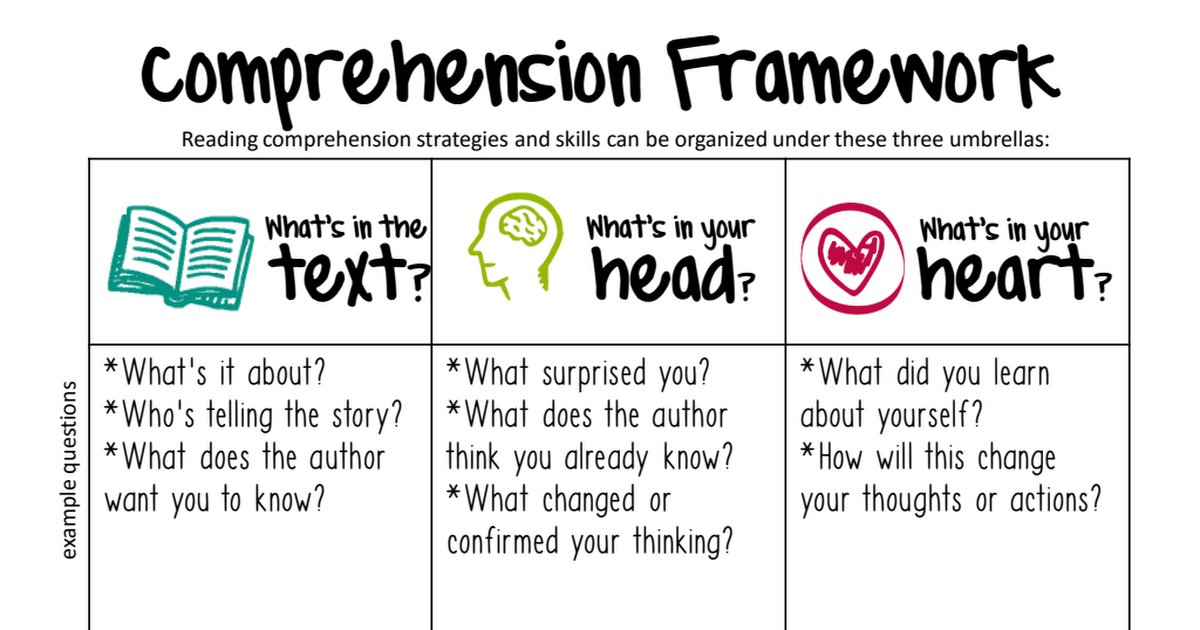 nine0004
nine0004
About the book
We are usually good at reading other people's emotions and are good at conversation. But sometimes a person seems like a closed book: he hides his intentions, does not respond to requests, gets angry or offended in response to innocent phrases. What if there is a stranger in front of us? It's not at all clear what to expect.
Communications
Wait. Science journalist and popularizer Rita Carter is reassuring: we can learn to "read" people. Facial expressions, gestures, movements can reveal true feelings and goals. The physical features of the interlocutor - talk about life experiences. And the right conversation tactic is to lead to the desired results. nine0004
One of the amazing discoveries of this book is that the ability to read faces is hardwired into our brains. Each explains a new concept and then gives hints on how to use it. There are brief conclusions at the end. A nice bonus is the "Recommendations" section: publications, films, online courses and even museums are collected here for those who want details.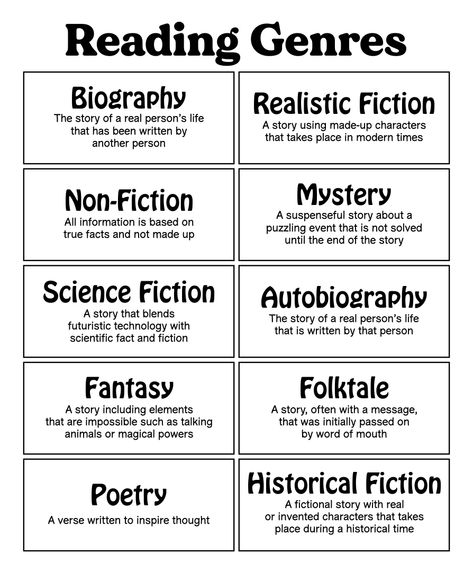
Let's look at some simple strategies that will help you maximize your communication effectiveness. nine0004
Strategy 1: choose the right role - adult, parent or child
Psychologist Eric Berne noticed back in the 1950s that most people in communication use the role of Adult, but sometimes respond from the position of Parent and Child. He called these ego states, or different selves, and the theory of social interaction itself, "Transactional Analysis."
Who is who?
- The adult reacts to reality here and now (this is the only "I" that is not connected with the past). nine0031
- The parent thinks, feels and behaves in the same way as his parents or guardians did when he was a child. The parent may be critical or caring.
- The child reproduces the thoughts, feelings and behavior that he experienced in childhood. It can be free or adaptive.
The trick is that in one conversation a person can first speak like an Adult, then like a Child, and then like a Parent.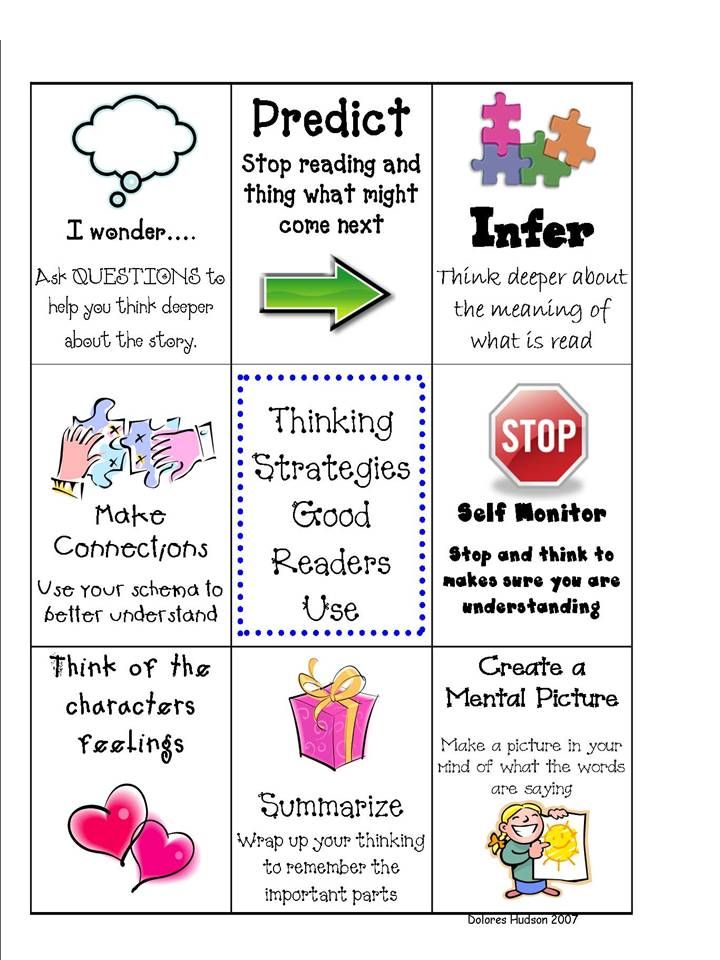 And you too.
And you too.
You can communicate productively when you respond to the words of the interlocutor in a complementary way. nine0004
For example, if you are told, “You look tired. I think you should go to bed,” the statement comes from the position of the Parent. It is worth answering from the position of the Child. And to the exclamation “Oh! I cut myself!" (Child), the complementary answer would be: “Let me cover the wound with a band-aid” (Parent).
Sometimes transactions overlap. This happens when a person says something as a Child or Parent and is answered by an Adult (or vice versa). For example, you say: “I will cook your favorite dish for dinner” (Parent) and hear in response: “Thank you, but I will cook it myself” (Adult). The conversation comes to a halt. People may do this on purpose - to cut off communication, or because they are angry. nine0004
The roles of a child and a parent complement each other and make communication productive. - Source
Practice: listen to the dialogues and note which lines belong to whom.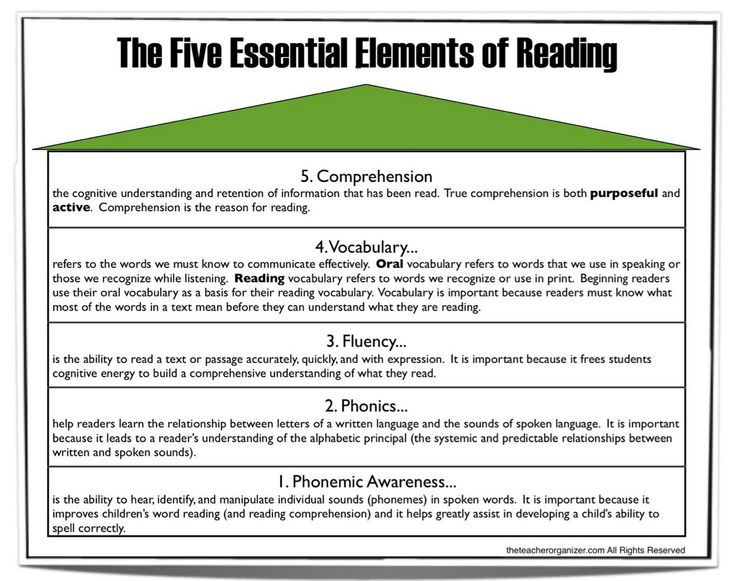 Learn to see the Parent, Child and Adult in you. Try to respond to the words of others in a complementary way.
Learn to see the Parent, Child and Adult in you. Try to respond to the words of others in a complementary way.
Strategy 2: Persuade based on reciprocity or commitment
Reciprocity is one of the main tools of influence. People are more open to influence if they owe you a favor in the past. It's important to make sure they notice the kindness. Here's what sociologist Robert Cialdini advises: "Don't say 'No way'. Designate the act, for example: “No problem, we are partners!”. He calls it preparation work. When you later need support, your “partnership” act will be remembered and they will try to repay the same. nine0004
Gratitude will work for you. — Source
Charities often include gifts in their appeals (usually notebooks or pens). At first glance, this seems wasteful. But much more donations come in response to letters with souvenirs than ordinary ones. It seems that many recipients feel the need to give something in return.
People are easier to influence if they feel indebted for a favor they have rendered in the past.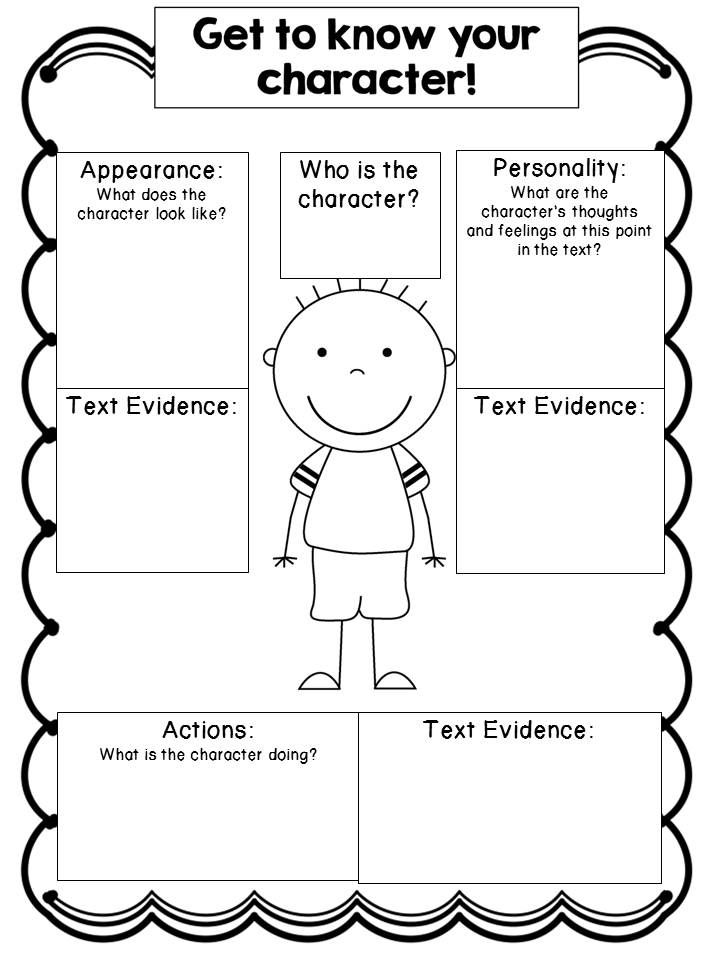
Commitment is another important weapon hidden under the sweet glaze of persuasion. If you can get a person to agree with an idea or action, they are more likely to respect it. For example, when you want to convince someone to join a complaint at a restaurant, you might say, “It's been half an hour since we placed our order. What we can do?". Very often the answer will be: "Let's complain." Getting a person to make a promise publicly is a particularly powerful move. Almost everyone will want to be consistent and reliable. nine0004
Strategy 3: Be confident
Confident people become leaders in the group, get higher status, and they get more love. University of California researcher Cameron Anderson noted that even when the experiment revealed that some overconfident students were bluffing, fellow students did not turn their backs on them. He analyzed the behavior of pets and found their main difference: they sincerely believed in themselves, did not pretend. Try to develop traits such as relaxation and sociability, they form an image that others are drawn to and trust.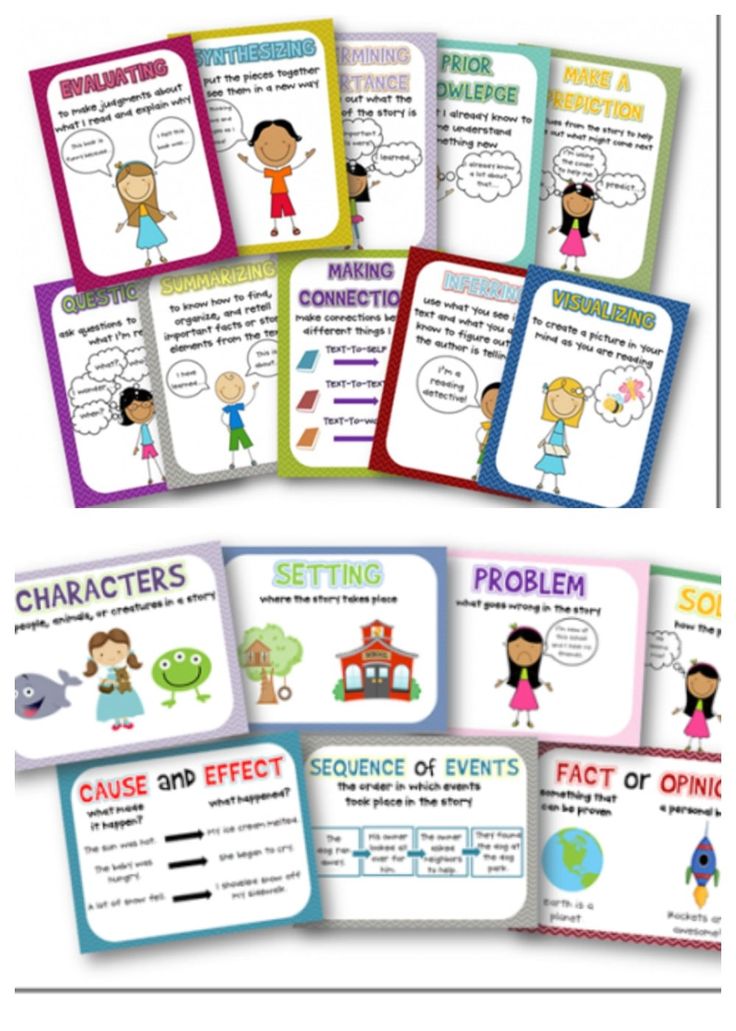 nine0004
nine0004
Develop self-confidence. But don't overdo it. — Source
Body position can demonstrate a person's confidence. It is reflected in a straight posture, spread legs and arms. And such a movement as stretching the arms with palms turned down creates a feeling of calm and strength (or shows the rigidity of a person, his desire to control the situation).
True, with confidence, not everything is going smoothly. Here's the funny thing: research has shown that on simple aptitude tests, the more confident a person is, the worse they perform. Confident people often overestimate their ideas, while insecure people often overestimate their ideas. Overconfidence can be dangerous, for example, it is the cause of many car accidents (90% of motorists believe that their driving skills are above average). All this is worth remembering while working on yourself.
Perhaps the book's most valuable piece of advice is that everything that applies to others also applies to us.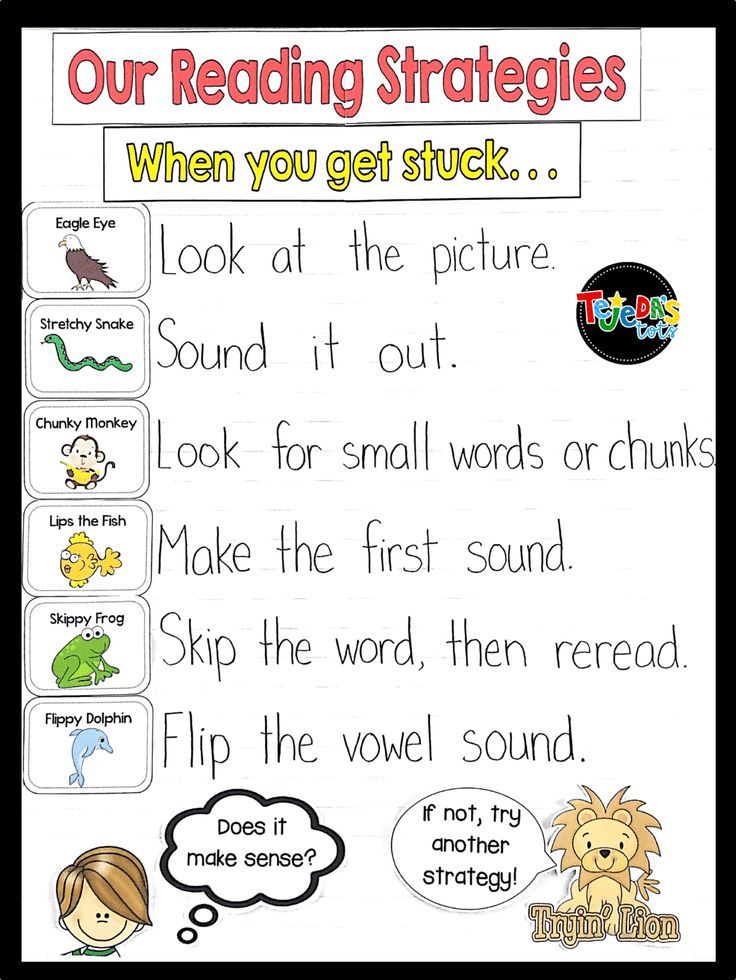 If we want to "read" people, negotiate with them, be heard, we need to make sure that we ourselves "write" ourselves clearly enough.
If we want to "read" people, negotiate with them, be heard, we need to make sure that we ourselves "write" ourselves clearly enough.
Based on the book "Communications"
Post cover unsplash.com.
Forex strategies for beginners
- Material information
- Category: Strategies for beginners
- Views: 9163
Beginning Forex traders are faced with a wealth of new information that can take anywhere from weeks to months to digest. You usually want to trade right now, but understanding the intricacies of trading strategies comes much later. Despite the assurances of the classics that the trading system should be as simple as possible, and its rules should fit on a small piece of paper, some do not look for easy ways and begin to introduce complex algorithms into trading. nine0004
In fact, you need to use elementary Forex strategies for novice traders, which consist of a couple of indicators, and you don't need to study the chart for hours to get a signal.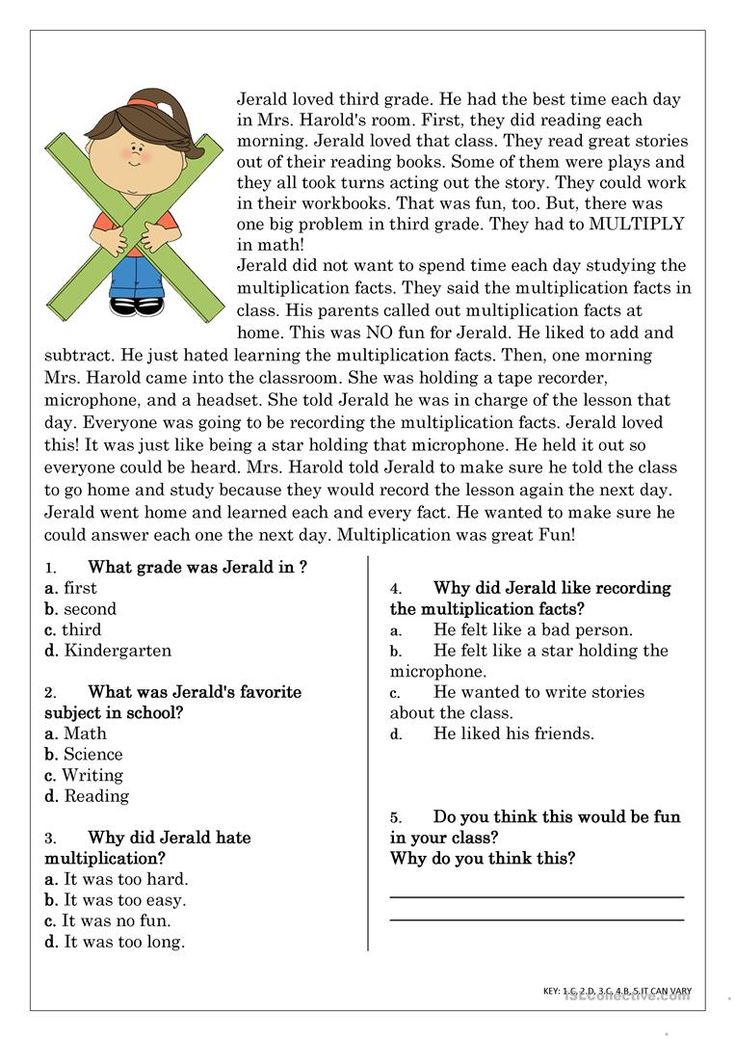 Consider examples of simple trading systems that are ideal as a first trading algorithm for beginner traders.
Consider examples of simple trading systems that are ideal as a first trading algorithm for beginner traders.
"Turtle" - a simple Forex strategy for beginners
For trading on the "Turtle" system, you do not need to know the rules of technical analysis and look for fundamental relationships between currency pairs. All a trader needs to do is open a daily chart of any financial instrument from the Major class, determine the boundary levels in the pair's movement range for a 20-day period. The trading rules for the simplest Forex strategy for beginners are simple. nine0004
A signal to buy a financial asset occurs if the current price is above the upper level. Likewise with sales. You can sell the pair if the price of the asset is below the trading range. An example of the Turtle trading strategy is shown in the figure below.
The red vertical lines on the chart mark the movement range of the currency pair for 20 days. Horizontal lines indicate its upper and lower boundaries.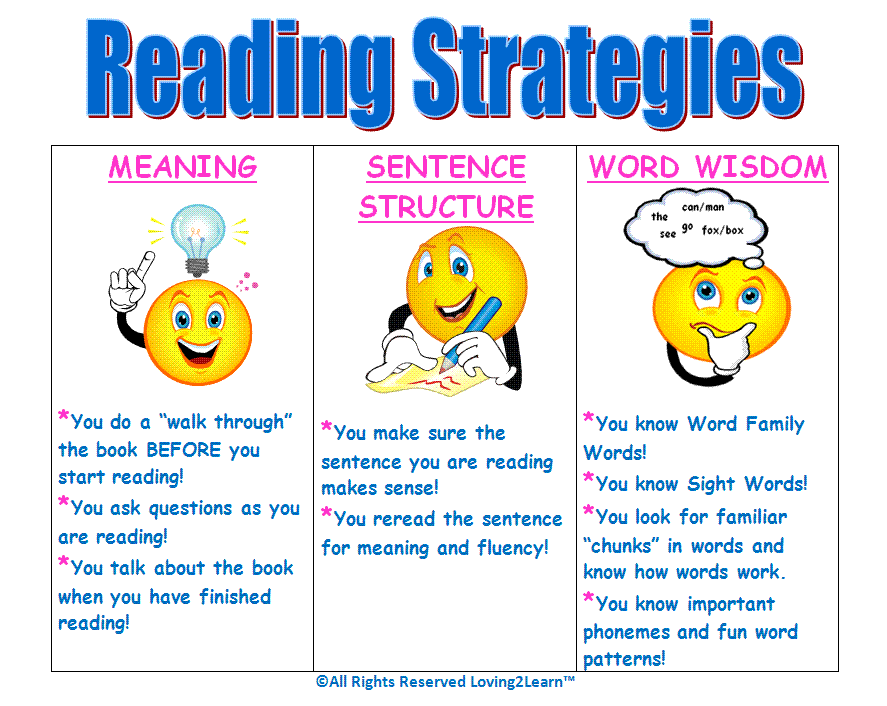 Immediately after the end of the 20-day period, the price was inside the trading range. At this time, it is not worth entering into trading, because there is no understanding of where the price will go next. In this example, you need to sell the pair after breaking through the lower boundary of the range. nine0004
Immediately after the end of the 20-day period, the price was inside the trading range. At this time, it is not worth entering into trading, because there is no understanding of where the price will go next. In this example, you need to sell the pair after breaking through the lower boundary of the range. nine0004
As we can see from the example, the price fixed on the lower line for three days, which is a good sign. This suggests that the currency pair intends to continue to decline, which happened in practice. After breaking through the lower boundary of the corridor, the pair could bring the trader 125 points of profit if the deal was made. The recommended broker for trading is Alpari .
Moving averages are a classic of trading
One of the simple Forex strategies for beginners, which does not lose popularity, is the system based on the intersection of moving averages. This indicator exists in the standard set of almost any trading platform. Averages (MovingAverage) are an average indicator of closing prices, opening prices, etc.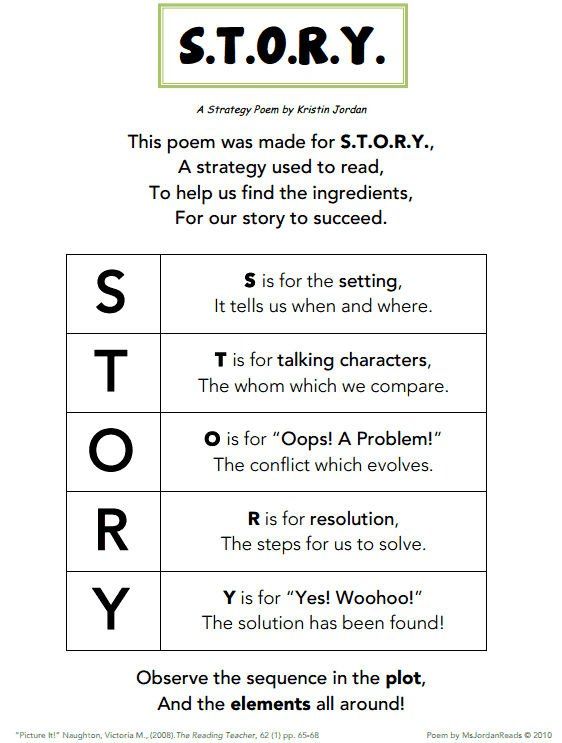 (the construction method must be selected in the indicator settings) for a certain period. nine0004
(the construction method must be selected in the indicator settings) for a certain period. nine0004
Usually two moving averages are used for trading - slow and fast. The period of the first of them is greater than that of the second. At the same time, the periods should differ at least twice. For each timeframe, you need to choose your periods.
Averages - trend indicator. Their direction shows the direction of the current trend. Their intersection means a trend change. This is exactly what you need to use to enter transactions. It is necessary to open an order to buy a currency pair in the case when a slow average with a shorter period crosses a fast one with a large one from the bottom up. You need to sell the pair when the opposite conditions coincide. The slow moving is above the fast one and crosses it, but already from top to bottom. You can see an example of how the strategy works in the image below. nine0004
The yellow curve is a moving average with a period of 5 (fast average).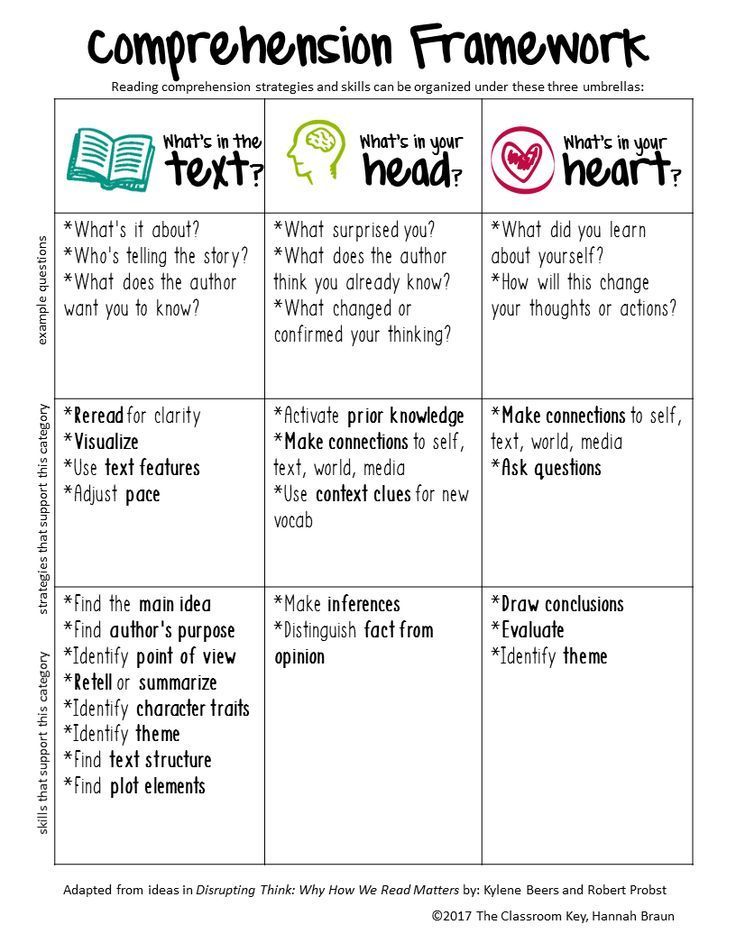 The red curve is the average with a period of 14.
The red curve is the average with a period of 14.
It should be remembered that the MovingAverage indicator works well only during trend periods. In a flat, the program shows a failure and can cause losses. Therefore, it is necessary to determine the phase of the market at the stage of preliminary analysis. An experienced trader sees the trend with the naked eye. For a beginner this is more difficult.
The method of determining the trend in the Forex strategy for beginners is simple. It is necessary to connect the maximum and minimum points of movement of the price of a financial instrument for a certain period, the width of which must be at least 24 candles. If the resulting line is directed downwards, the market is in a downtrend. An upward trend is indicated by the upward direction of the line. If the resulting level is located almost horizontally, it is not worth trading using the trading system with the intersection of the averages. The price of a financial asset is in a side corridor, so trend indicators will not work. nine0004
nine0004
What should be the Forex strategy for a beginner?
Choosing a trading system at the initial stage of acquaintance with trading, you need to follow several principles:
- It should be simple. Strategies with multiple indicators or charts should be avoided.
- It should give recommendations on currency pairs, timeframe and risk management that are most suitable for trading with this algorithm. This is a necessary minimum, the presence of which is mandatory. nine0031
- Don't settle for a system that doesn't have a rationale for every action. Do not use algorithms that offer to open orders by arrows or repaint lines.
The usual beginner's Forex strategy is a set of certain rules taken from different trading strategies. Often novice traders trade according to intuition, without adhering to any principles at all. Both ways are wrong and lead to defeat in the Forex market. Currently, there are many simple strategies that, despite their primitiveness, can bring profit.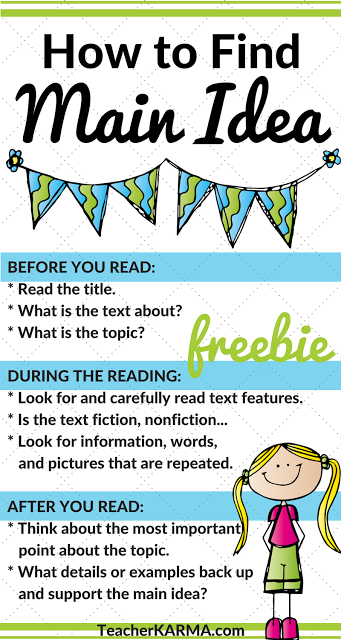

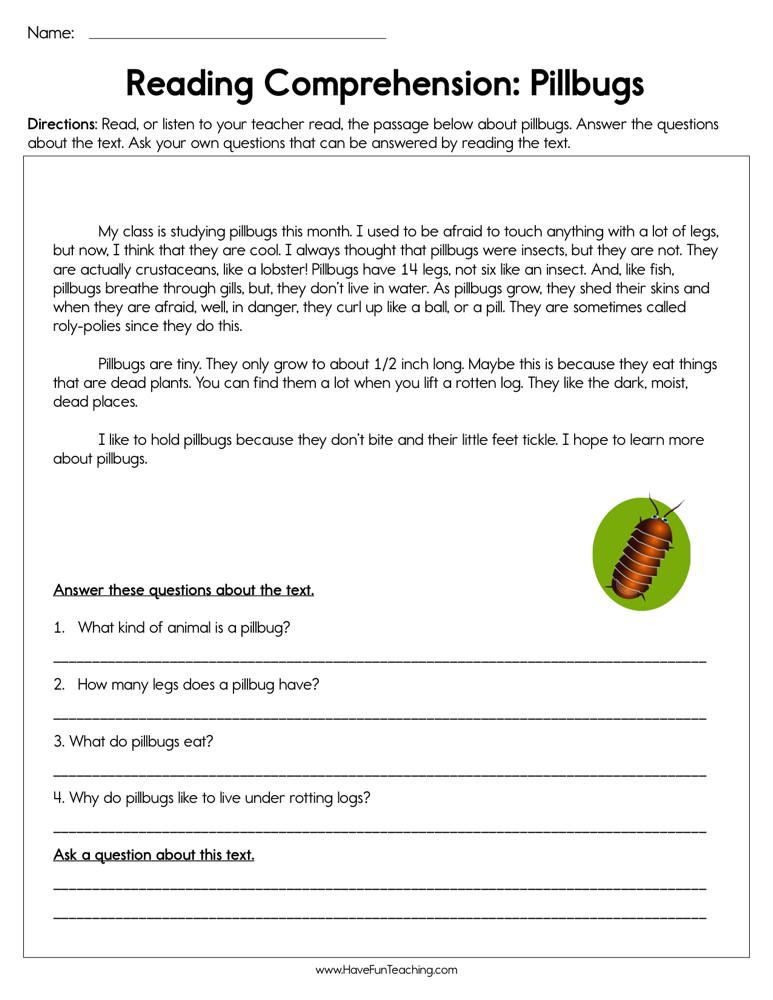 6–8.0)
6–8.0)